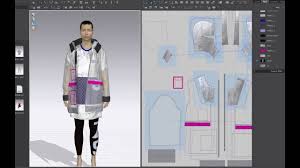The Art of Clothes Design
Clothes design is a fascinating blend of creativity, functionality, and innovation. It is the process of conceptualizing, creating, and producing garments that not only serve a practical purpose but also reflect individual style and cultural influences.
Designers draw inspiration from a variety of sources, including nature, art, history, and current trends. They use their creativity to envision unique silhouettes, patterns, colours, and textures that will resonate with their target audience.
Attention to detail is paramount in clothes design. From selecting the right fabrics to perfecting the stitching and embellishments, every aspect of a garment is carefully considered to ensure both quality and aesthetic appeal.
Moreover, clothes design is not just about creating beautiful pieces; it also involves understanding the functionality and comfort of the garments. Designers must strike a balance between style and wearability to ensure that their creations are not only visually pleasing but also practical for everyday use.
In today’s fast-paced fashion industry, clothes design plays a crucial role in shaping trends and influencing consumer preferences. Designers constantly push boundaries, experiment with new techniques, and challenge conventional norms to create fresh and exciting collections that captivate audiences worldwide.
Whether it’s haute couture on the runway or ready-to-wear in high-street stores, clothes design continues to evolve as designers seek to make their mark on the ever-changing landscape of fashion.
Five Benefits of Clothes Design: Fostering Creativity, Innovation, and Economic Growth
- Allows for creative expression and artistic exploration.
- Enables designers to influence fashion trends and set new styles.
- Provides opportunities for innovation in fabric technology and garment construction.
- Helps individuals showcase their personality and unique sense of style through clothing.
- Contributes to the economy by supporting industries such as textiles, manufacturing, and retail.
Challenges in Fashion Design: Costs, Trends, Competition, Time, and Environmental Impact
- High production costs can make designer clothes expensive for consumers.
- Design trends may change rapidly, making it challenging for designers to stay relevant.
- Competition in the fashion industry is fierce, leading to a saturated market and difficulty in standing out.
- Designing and producing clothes can be time-consuming, especially for intricate or custom pieces.
- Environmental impact of clothing production, including waste and carbon footprint, is a growing concern in the industry.
Allows for creative expression and artistic exploration.
Clothes design offers a platform for unparalleled creative expression and artistic exploration. Designers have the freedom to push boundaries, experiment with innovative concepts, and infuse their unique style into every garment they create. From choosing fabrics and colours to crafting intricate details, clothes design enables artists to unleash their creativity and transform their vision into tangible pieces of wearable art. This pro of clothes design not only fosters individuality but also contributes to the rich tapestry of fashion by introducing fresh perspectives and inspiring new trends.
Enables designers to influence fashion trends and set new styles.
Clothes design empowers designers to wield a significant influence over fashion trends and establish innovative styles. By infusing their creativity and vision into their designs, designers have the ability to shape the direction of the fashion industry and introduce fresh aesthetics to the market. Through their unique interpretations of colours, patterns, silhouettes, and materials, designers can set new trends that resonate with consumers and inspire other industry professionals. This pro of clothes design not only showcases the creativity and talent of designers but also highlights their pivotal role in driving fashion forward and sparking sartorial revolutions.
Provides opportunities for innovation in fabric technology and garment construction.
Clothes design offers a valuable pro by providing opportunities for innovation in fabric technology and garment construction. Designers are constantly exploring new materials, techniques, and processes to enhance the quality, functionality, and sustainability of clothing. By pushing the boundaries of traditional fabric choices and construction methods, designers can create garments that are not only aesthetically pleasing but also durable, comfortable, and environmentally friendly. This focus on innovation drives progress in the fashion industry, leading to the development of cutting-edge textiles and construction techniques that elevate the art of clothes design to new heights.
Helps individuals showcase their personality and unique sense of style through clothing.
Clothes design offers individuals a powerful platform to express their personality and showcase their unique sense of style through the garments they wear. By carefully selecting pieces that resonate with their personal preferences, individuals can communicate aspects of their identity, values, and creativity to the world. Whether it’s through bold patterns, tailored silhouettes, or eclectic accessories, clothes design empowers individuals to curate a wardrobe that truly reflects who they are and allows them to stand out in a crowd with confidence and authenticity.
Contributes to the economy by supporting industries such as textiles, manufacturing, and retail.
Clothes design plays a vital role in contributing to the economy by supporting industries such as textiles, manufacturing, and retail. The process of designing and producing garments creates a ripple effect that boosts employment opportunities, stimulates innovation, and drives consumer spending. Textile mills, factories, and retail outlets all benefit from the demand for well-designed clothing, leading to a thriving ecosystem that fuels economic growth. By fostering creativity and entrepreneurship within these sectors, clothes design not only enhances individual style but also sustains a robust economy through job creation and industry expansion.
High production costs can make designer clothes expensive for consumers.
One significant drawback of clothes design is the high production costs associated with creating designer garments, ultimately leading to expensive price tags for consumers. Designers often invest in quality materials, skilled labour, intricate detailing, and exclusive branding, all of which contribute to the elevated production costs of designer clothing. As a result, these expenses are passed on to consumers, making it challenging for many individuals to afford luxury or high-end designer pieces. The exclusivity and craftsmanship that come with designer clothes can come at a steep price, limiting accessibility for those on a tighter budget and highlighting the economic disparity within the fashion industry.
Design trends may change rapidly, making it challenging for designers to stay relevant.
One significant challenge in the realm of clothes design is the rapid pace at which design trends evolve and change. Designers constantly face the pressure of staying relevant in an industry where styles can shift swiftly, making it challenging to keep up with the latest trends. This constant flux requires designers to adapt quickly, innovate continuously, and anticipate future shifts in consumer preferences to ensure their creations resonate with their audience. The need to balance creativity with commercial viability amidst ever-changing design trends poses a constant conundrum for designers striving to make a lasting impact in the dynamic world of fashion.
Competition in the fashion industry is fierce, leading to a saturated market and difficulty in standing out.
In the realm of clothes design, one significant drawback is the intense competition within the fashion industry, which has resulted in a saturated market and challenges in distinguishing oneself. With countless designers vying for attention and consumer loyalty, it can be daunting to carve out a unique identity and establish a distinctive brand presence. The constant influx of new trends and collections further amplifies the struggle to stand out amidst the sea of offerings, making it increasingly demanding for designers to capture the spotlight and secure their position in an overcrowded marketplace.
Designing and producing clothes can be time-consuming, especially for intricate or custom pieces.
Designing and producing clothes can be a time-consuming process, particularly when it comes to intricate or custom pieces. From the initial concept development to sourcing materials, creating prototypes, and final production, each step demands meticulous attention to detail and precision. Custom garments, in particular, require additional time for measurements, fittings, and adjustments to ensure a perfect fit and unique design that meets the client’s specifications. Despite the challenges posed by time constraints, the careful craftsmanship and dedication invested in these pieces often result in exceptional quality and individuality that set them apart in the world of fashion.
Environmental impact of clothing production, including waste and carbon footprint, is a growing concern in the industry.
The environmental impact of clothing production, encompassing issues such as waste generation and carbon footprint, stands as a significant con within the realm of clothes design. This growing concern within the industry highlights the detrimental effects that mass manufacturing and fast fashion practices can have on our planet. The excessive use of resources, chemicals, and energy in garment production contributes to pollution, deforestation, and greenhouse gas emissions, ultimately exacerbating environmental degradation. As consumers become more conscious of these impacts, there is a pressing need for sustainable practices and responsible decision-making to mitigate the negative consequences of clothing production on our environment.

